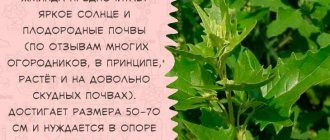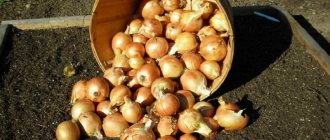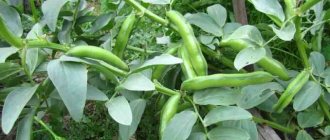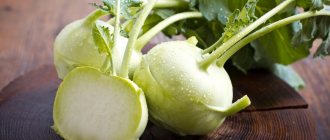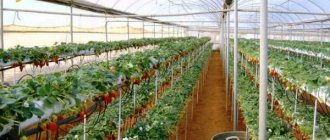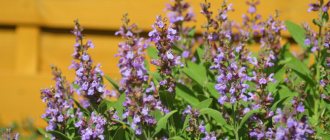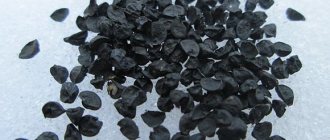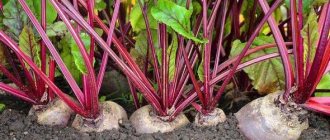Coriander and cilantro, two names - one plant
Many people do not know that coriander and cilantro are the same plant, and consider them different spices.
In fact, coriander is the seeds of the plant, and cilantro is its greens. In cooking, cilantro is used as an additive to salads or sauces, and coriander seeds are used as a spice to keep meat dishes fresh longer. In addition, aromatic coriander is added to sausages, canned food, cheeses, baked goods, and even to some types of German beer. Coriander seeds are rich in essential oils, vitamins A, E, K, PP, as well as potassium, sodium, calcium, iodine, phosphorus.
Did you know? Only well-ripened seeds have a characteristic bright aroma. Those that are not ripe have a completely different, even unpleasant, bug smell. This is probably where cilantro seeds got their name - coriander: "coris" in Greek means "bug".
How to plant coriander in the garden, terms and conditions for planting a spicy plant
Coriander sativum (vegetable coriander) is an annual herbaceous plant of the coriander genus, of the Apiaceae family. The most common variety is Yantar, which accounts for 90% of all sown areas.
The cultivation of coriander is widespread in Ukraine, the south of the European part of Russia, and the North Caucasus. However, some vegetable growers manage to grow it at the latitude of Moscow and even in central Yakutia. Wild coriander can be seen in the Crimea, the Caucasus and Central Asia.
Coriander was used in cooking and for medicinal purposes by the inhabitants of Ancient Greece and Ancient Rome, then it spread throughout Europe, the southern European regions of Russia and the Caucasus. The technology for growing coriander, despite its exotic nature, does not require complex measures, therefore, if desired, even a novice vegetable grower can grow coriander on his own plot. Before the seeds ripen, cilantro is grown, and then the plant is left for seed and coriander is obtained.
Did you know? Coriander is the oldest known spice in human history. There is even a mention of it in the Old Testament.
Dates for planting coriander (cilantro)
Cilantro is a fairly cold-resistant plant; it can withstand frosts down to -5˚ C.
Therefore, you can plant coriander before winter, then the first greenery will appear in March. To grow coriander in a greenhouse, you need to sow it in late February - early March, then the first shoots will appear in 40 days.
But most often, coriander is sown in open ground in the spring, when the soil has thawed and warmed up sufficiently, around the end of April. With this sowing, the seeds will ripen by the end of August.
If you sow the seeds in May - June, the flower stalks will sprout in 20 days, but the plant will be weaker than if it is planted in early spring.
Sowing coriander can be done not only in spring, but even in August - only shoots will appear even later.
How to choose a site for planting (soil, lighting, wind protection, etc.)
Coriander is a light-demanding plant; if it is insufficient, ripening slows down, yield and essential oil content decrease. To get a good harvest of coriander seeds, you need to sow only in a sunny area.
It is best to plant the plant on a plain or hill, but not in a hollow, otherwise it will get wet before it ripens. The soil is suitable loamy and sandy loam, moderately acidic or neutral, loose and well fertilized during digging.
Coriander planting dates
Cilantro is sown before winter at the end of February. It will take approximately 40 days for the plant to sprout its first shoots. It is important to understand that the ripening period is affected by the harsh conditions of early spring, despite growing in a greenhouse. So it’s worth considering whether it’s so important to grow coriander before winter, and not at other times of the year.
For example, cilantro sown in May can bloom within 20 days. Of course, the variety plays a role, but the climate factor is certainly strong. However, 40 days is not that long, and the first greens can be obtained at the end of March.
Preparing to plant cilantro
When to sow cilantro in open ground:
- for permanent fresh greens - in spring and summer, from the last week of April to the end of July, renewing the crops every 2 weeks;
- so that there is a good harvest of seeds - in May, they will have time to ripen and dry;
- sowing at the end of October will ensure early germination.
Soil and seeds for sowing
Cilantro does well in fertile, well-drained soil, but can grow in clay soil if prepared first:
- when digging in autumn or spring, add 1 bucket of humus, 20 g of superphosphate per 1 m2;
- You can use sand as drainage - you need to scatter it over the bed in an even thin layer after digging, then loosen the area.
What cilantro doesn’t like:
- deep shadow;
- water stagnation;
- low areas.
The following are suitable precursors for cilantro:
- cucumbers;
- cabbage;
- legumes;
- potato.
You should not plant cilantro after:
- parsley;
- anise;
- fennel;
- celery;
- parsnip.
You can plant cilantro in one bed:
- with cucumbers;
- carrots;
- onions;
- salad.
It is not recommended to plant parsley next to cilantro - the plants need the same substances, and as a result there will be a lack of nutrition for both crops. In addition, it will be inconvenient to distinguish one spice from another due to the similarity.
Preparing cilantro seeds is an optional procedure, but in order for the crop to germinate faster, do the following before planting:
- soak for 48 hours in water, changing it every 12 hours;
- placed in aloe juice for a day;
- put in a solution of a stimulant, for example, "Epin", diluting it according to the instructions.
You should not plant seeds that are more than 3 years old - germination rates drop significantly.
Watch a video about sowing and caring for a plant:
Cilantro plant - planting and first care of seedlings
Cilantro is planted mainly in the first weeks of spring, so preparation begins in late autumn. You cannot do without deep plowing and good loosening of the soil immediately after frost, so that there is a kind of “cushion”. Fertilizers are the key to an excellent spice harvest. You will need 200 kg of superphosphate and potassium salt per 1 hectare of area, as well as 150 kg of ammonium nitrate. Fertilize twice a season so that the grass grows large and does not enter the stemming stage.
The best predecessors are annual grasses, legumes and wheat. It is not recommended to plant kishnish after sunflower, pumpkin, cabbage, beets and corn. The bed should be loosened in the spring to a depth of 20 centimeters, after which sowing is carried out to 2-3 centimeters (more is not possible, since the plant has very little vitality). The best time for sowing is April 21-29. In order to provide yourself with tasty herbs throughout the season, you need to sow every 15-20 days so that you have several stages of ripening of spices.
Row spacing is at least 15 centimeters; 1.8 million seeds are planted per hectare. After planting, it is best to use rollers to compact the soil a little. Abundant watering is required. Before planting, it is necessary to soak all seeds in a growth stimulator for 8-12 hours - this increases germination by 25%. After successful shoots have been obtained, periodically loosen the soil, preventing it from drying out and forming a crust.
Growing cilantro from seeds in open ground
Already at the end of February and beginning of March, you can sow cilantro seeds in greenhouses. After the seeds germinate, flower stalks will appear on the 40th day.
If you sow seeds in May-June, then on the 20th. Coriander is sown in open ground from April 20 to April 28. For 1 sq.m. you will need 2.5 grams of seeds. The sowing depth of cilantro seeds is 1.5-2 cm, the distance between plants is 10-13 cm, between rows is 15-30 cm (there is no need to soak coriander seeds before sowing). When two true leaves appear, thin out, leaving a distance of 8 cm between plants. Cilantro should be grown at a temperature of 20-25°C, with plenty of lighting, since these are long-day plants. In poor lighting, the development of cilantro will slow down.
Scheme and methods of planting cilantro
According to the technology for growing coriander, sowing is recommended at the rate of 1.5 g of material per m². The maximum volume of sown planting material per m² is 2.5 g. The approximate depth is 1.5-2 cm. Before distributing the seed material, the soil must be moistened, excluding sowing a spicy-aromatic crop before winter, when dry seeds are buried. When sowing, different methods of distributing planting material are used:
- scattered;
- into the grooves;
- into the holes.
Attention!
A distance of about 15 cm is maintained between the furrows. 3 seeds are dropped into each hole (the step between them is 10-15 cm). When using the “scatter” method, before sowing, the soil is dug up well again (half a bayonet).
Coriander plant - description
The root of coriander is spindle-shaped, the stem is bare, erect, branched in the upper part, reaching a height of 40 to 70 cm. Broad-lobed, tripartite, dissected into large parts, incised-serrate along the edge, the basal leaves of coriander are located on long petioles. The petioles of the lower stem leaves, double pinnately divided, are much shorter than those of the basal leaves. The middle and upper stem leaves are vaginal, sessile, and their leaf blades are dissected into pinnate linear lobules. The aromatic green coriander, commonly called cilantro, is a popular addition to salads, meat and fish.
In the photo: Growing coriander from seeds
Coriander blooms in June or July with complex umbels of 3-5 rays, located at the ends of peduncles and consisting of small pink or white flowers that attract bees. The plant is an excellent honey plant. The fruit of coriander is a hard, ovoid-spherical plant with straight and sinuous ribs.
Which variety of cilantro to choose?
Before choosing a variety of cilantro, you need to decide for what purpose you will need the spice. If it’s greens, then it’s better to choose vegetable varieties - they are distinguished by their high aromaticity, special tenderness of leaves and late flowering period. If cilantro is grown for coriander production, then varieties that produce high-quality seeds should be planted. The most popular vegetable varieties are:
- Avangard is a compact plant of small height with dense foliage and a strong spicy aroma; it can be planted in the house on a windowsill or balcony;
- Caribe is a compact, well-leafed and late-flowering variety, highly dissected greens with a delicate taste and intense aroma;
- King of the Market is an early ripening variety, distinguished by a significant amount of green mass, compact plants with juicy, tender greens and a strong spicy aroma;
- Borodinsky is a mid-season variety, compact but tall (up to 70 cm) plants, the greens have a mild taste, suitable for salads and garnishing dishes, intended for growing in the ground;
- Taiga is a late-ripening variety, but resistant to flowering, compact small plants with dense foliage;
- Piknik is an early variety, a compact bush with thick serrated leaves, intense aroma and mild taste, can be planted on a windowsill.
To obtain greens and fruits, varieties that are grown only in soil are suitable:
- Amber is a plant with a well-leafed, delicate-tasting green part, the seeds have an intense spicy aroma;
- Venus is a salad variety with thick, tender greens; the seeds have a mild spicy aroma and are used to flavor marinades and baked goods;
- Alekseevsky is a mid-season variety, blooms late, is resistant to low temperatures, the greens are tender, spicy, seeds with a high content of esters.
Popular vegetable varieties of cilantro
For collecting cilantro, preference is given to vegetable varieties. They have delicate green leaves that are distinguished by their rich aroma:
- Avangard is a small bush, richly colored greens, has a bright spicy aroma, and can be grown indoors. The first cutting of cilantro is done after 45 days.
- Caribe - blooms mostly late, the leaves have a delicate taste and intense aroma.
- King of the market - this species is characterized by early ripening, has a large proportion of foliage, very juicy and delicate in taste.
- Borodinsky is a bush up to 65 cm, compact in size, and has an average ripening period. Having a delicate flavor, greens are perfect for salads. Cilantro is grown exclusively in open ground. Harvesting takes place already on the 35th day.
- Taiga is a low bush with abundant greenery. Ripens late, harvested after 45 days.
- Picnic - has an early ripening period. The foliage has a spicy taste and rich aroma. Suitable for growing at home.
Varieties of obtaining coriander
If seeds are important when growing, you should give preference to varieties that produce a high-quality coriander harvest:
- Amber is a bush with abundant foliage and a delicate flavor. Releases the arrow late. The seeds are characterized by a rich spicy aroma and are used in baking and cooking meat.
- Venus is a type of crop that has abundant greenery; the seeds have a mild piquant aroma.
- Alekseevsky - has an average ripening period, blooms late, the variety is resistant to low temperatures.
- Debut - has early seed ripening, ready in 45 days, grows up to 25 cm in height.
- Stimul is a medium-ripening variety, suitable for sowing before winter.
Some gardeners grow cilantro from ordinary seeds. Coriander seeds are simply sown in the ground and covered with soil using a rake. Later you get lush, good greens. This proves that cilantro is not a very demanding crop. But such cultivation only produces greens. To get an abundant, high-quality harvest of not only cilantro, but also seeds, it is necessary to adhere to a different growing technology. Special rules for planting seeds have been developed.
For early harvesting, it is recommended to plant in a greenhouse, under film or greenhouse.
To get early cilantro and seeds, it is recommended to propagate by seedlings. Seeds for seedlings are sown at the end of winter; cups and boxes for seedlings are used for this. The soil can be taken from the garden.
Sprouted plants are planted in open ground after frost, when it warms up. If there is a threat of repeated frosts, caring for seedlings involves covering them with film.
What affects the sowing time of coriander?
Weather
In general, the weather has little effect on planting dates: coriander is a cold-resistant crop that can tolerate even light frosts. However, it should be sown no earlier than a stable temperature above +5 at any time of the day has been established - this is when it develops best. Ideally, if the weather is warm and sunny - then the seedlings develop fastest.
Important!
On cloudy and rainy days, you can postpone sowing for 7-10 days.
Variety
The planting time for different crop varieties depends on what exactly you need to get:
- If you need cilantro, that is, greens, the timing is not too important; you can sow it until mid-summer.
- If you need coriander seeds, you need to sow them as early as possible in order to get a harvest before September. In this case, you can even sow before winter, so that the seeds that have overwintered in the soil germinate as early as possible.
The same bush cannot be used to obtain both cilantro and seeds - the seeds will come out underdeveloped and foul-smelling, or there will be very few of them. It is recommended to grow coriander and cilantro in different beds.
In addition, there is a dependence on the ripeness period:
- Late-ripening varieties should be planted early so that the coriander has time to capture as much warm and sunny time as possible.
- Early ripening ones can be planted a little late.
Growing regions
Regarding the region, the rule applies: the further south, the earlier the sowing. In the northern Caucasus, Kuban and Crimea, planting can begin at the end of March. The further north you go, the later the sowing dates shift, and at latitudes north of Moscow it is usually not grown (although some enthusiasts managed to get harvests even in central Yakutia).
Moon phases and folk signs
Regarding the phases of the moon, we can say with confidence that they do not affect anything. Since the lunar calendar “floats” relative to the solar calendar, the phases of the moon are constantly shifting, and they cannot even be used as a guide for dates.
There is no connection between the moon and vegetables. Suffice it to recall the experience of grandmothers who have been getting good harvests for decades, but have never even heard of such a thing as the “lunar calendar of agricultural work.” The fashion for lunar calendars is pure superstition.
Folk signs are also unreliable: coriander is a relatively new crop for Russia, and the people have not had time to accumulate rich experience in its cultivation. In addition, the climate has been changing in recent decades, and previous guidelines are no longer working.
However, signs can be used if sowing dates are tied to the development stages of other plants. In the case of cilantro, it is recommended to plant it when the cherry trees are blooming. However, this is only a recommendation and not mandatory.
Technology for growing and caring for coriander before winter in open ground, how and when to sow
Cilantro is a well-known herb that has become an annual herb that has found its way into European cuisine. It has a rich, sweet aroma. Contains a huge amount of vitamins and microelements. Rich in ascorbic acid.
These valuable qualities attract the attention of many gardeners. Growing cilantro has become a pleasure. It is important to decide how and when it is recommended to sow coriander before winter.
Agricultural technology does not involve a complex growing process; therefore, even an inexperienced gardener can get a harvest.
Harvesting cilantro
The ripening period of coriander depends on the varietal characteristics. When an early ripening variety is planted, the harvest can be harvested after 30 days (seeds). When the variety is mid-ripe, coriander seeds can be collected 35-40 days after germination. For late-ripening varieties of cilantro, the growing season is 45-50 days. When a spicy-fragrant crop is grown for greens, the top leaves and shoots are cut off before the flowering phase begins. The lower part of the bush is not touched, otherwise the plant will not continue to gain green mass.
Growing parsley from seeds in open ground Parsley is one of the first greens to appear in our beds. Getting a good harvest of parsley is not…
In open soil, growing cilantro from seeds is possible not only in the southern regions, but also in the north of the country. The crop is heat-loving, but cold-resistant, so it can be sown before winter. But, a lot depends on its purpose - if cilantro is grown for greens, then sowing should be done from April to July. When planning to collect coriander seeds, sowing is done before winter. The plant is easy to care for and does not require special attention from the gardener. However, agricultural techniques must be observed, since in case of waterlogging or lack of watering, the cilantro harvest will be small.
Diseases and pests
There are not many diseases that affect cilantro plantings, but during periods of prolonged rains and frequent dew in the morning, you can be left without a harvest. The cause may be ramulariasis of coriander. Pathogens can infect the plant throughout the entire growing season.
The first signs of ramulariasis appear on the leaves (brown spots).
Further development of the disease is accompanied by damage to the entire above-ground part: stems, umbels, buds, flowers, fruits. If the period of illness coincides with the flowering of coriander, then up to 80% of the harvest is lost. Before the formation of stems and the appearance of buds, plantings can be treated with fungicides. During flowering, all treatments are stopped, since the plant is a good honey plant.
With increased soil and air humidity, cilantro can be affected by powdery mildew. The fungus affects the above-ground part. When the first symptoms (white plaque) appear, you can use the traditional method - treat the plants with a soap-soda solution. When using chemicals, greens should not be eaten while the effect of the drug lasts. Pests to watch out for:
- bedbugs;
- seed eaters;
- winter cutworm;
- umbrella moth;
- wireworm.
Preparatory stage
Even before planting coriander, you need to decide on the choice of site, prepare the beds and seeds. The development of plants and their productivity depend on whether this is done on time and how correctly.
The best predecessors
Cilantro will not grow well in all areas; it is important to pay attention to what crops grew in this place previously. All legumes and cereals, root vegetables, cauliflower and early cabbage, onions, and green manure are considered good predecessors. Nightshade, pumpkin, cruciferous, spicy and green crops are acceptable
Nightshade, pumpkin, cruciferous, spicy and green crops are acceptable.
You cannot plant after umbelliferous plants: dill, parsley, fennel, watercress, carrots, celery, as well as turnips, medium and late cabbage. Onions, cucumbers, cabbages of all varieties, lettuce, and root vegetables are planted next to the cilantro beds.
Site selection and soil preparation
You should choose a well-lit place in the garden for this plant, since the ripening time, yield rate and concentration of essential oil in the seeds depend on this parameter. The beds should be located on a flat area or on a slight hill, but not in a lowland. The soil is preferably medium in mechanical composition - loamy or sandy loam, light, neutral or slightly alkaline (acidic soil will have to be limed).
It is best to prepare the soil in the fall. First, it is cleared of various plant debris, then dug up onto the bayonet of a shovel and at the same time fertilizer is applied (0.5 buckets per square meter and approximately 0.3 kg of ash). Sand is added to clay soil, and clay soil is added to sandy soil. The lumps are not broken; they must freeze in winter, which will allow them to destroy the pests. In the spring, add an additional 1 tbsp. l. urea and 30 g each of superphosphate and potassium sulfate.
Seed preparation
Another feature of cilantro seeds is that they take a long time to germinate, so to speed up germination they need to be soaked in water for 0.5 days. When planting in early spring in wet soil, soaking is optional. To make cilantro germinate faster, it is recommended to use growth stimulants or a 1 to 1 solution of aloe juice to soak the seeds.
Is it possible to grow coriander in open ground: how and when to sow before winter
Spicy green cilantro grows well in temperate latitudes in open ground and even in northern regions. It is grown to produce fragrant, juicy greens, as well as seeds, which are widely known as coriander. The spice with a rich chemical composition adds oriental notes to dishes. To cut greenery early and increase yield, it is recommended to sow coriander before winter.
Suitable time for planting coriander
Cilantro is a cold-resistant crop that can withstand temperatures as low as -5 °C. For this reason, it is often sown in early spring. This is done early - after the snow melts and the soil reaches a temperature of 6 °C. In the middle zone, the time for planting cilantro is in April, in the south it is possible to sow earlier - in March, in the northern regions - in the 1st half of May.
Since it is better to sow seeds early rather than late, winter planting of cilantro (coriander) in open ground is practiced. When determining the optimal timing, weather conditions in the region and the characteristics of the variety are taken into account.
To grow cilantro for greenery and harvest in the first half of spring, choose early-ripening varieties whose shoots are ready for the first cutting within a month.
There are two more groups, their growing season is slightly longer:
- mid-season - 40 days;
- late – 50 days.
Sowing seeds in beds
In order for growing cilantro from seeds in a temperate climate to produce a lot of juicy greens and aromatic seeds, which are used as a dry seasoning for preparing a variety of dishes, you need to properly prepare the soil and provide appropriate lighting and temperature conditions. Due to the possibility of sowing seed material in cold soil, the preferred method for cultivating the spicy crop is without seedlings; there is no need to plant cilantro (coriander) seedlings in the beds.
Predecessors
If last season the beds were occupied by dill, parsley, fennel, as well as carrots and late varieties of cabbage, it is better to leave them for another crop. Good predecessors, after which you even need to plant spicy cilantro: legumes and cereals, root vegetables (except carrots), cauliflower and early cabbage, onions, as well as green manure.
Previous crops that are acceptable for coriander growing technology: nightshade, pumpkin, cruciferous, spicy.
Site selection and soil preparation
You can grow fragrant cilantro in a well-lit place. The ripening time, productivity indicators, and the content of essential oils in the fruits depend on the abundance of light.
The beds are prepared on flat areas or on a small hill. Lowlands with close groundwater are avoided.
Greens develop well on loam and sandy loam soils with a neutral or slightly acidic reaction.
Prepare the land a month before the planned sowing date. First of all, the selected area is cleared of plant debris, then dug up. Depth - spade bayonet. At the same time, fertilizer complexes are placed under the digging.
The consumption rate for an area of 1 m² is 5 kg of compost and 300 g of wood ash. Adding sand will help make clay soil lighter, while sandy loam soil will be made heavier by using clay. The lumps are left to saturate with moisture if there is natural precipitation.
Before sowing, moisture is covered by harrowing the area.
Seed treatment
The speed at which sprouts appear depends on the germination of the seeds. For sowing in the garden, take seed that is not older than 2 years. Subsequently, every year its germination rate decreases by 10-15%.
If a summer resident purchases seed, then the purchase can only be made at specialized points. Pre-winter sowing is carried out with dry seeds; they do not require additional processing.
All pre-sowing treatment comes down to visual inspection and rejection of immature specimens. They are easily distinguished by their “aroma”; it resembles the smell of bedbugs.
Sowing technology
Recommended seed consumption is 1.5 g/m². Planting depth is 1.5-2 cm. Different sowing methods are allowed - in furrows, holes, scattering. When planted in rows, maintain an interval of 15 cm between lines. If sowed scattered, 2.5 g of material is used per 1 m². The holes are prepared, observing a step of 10-15 cm. 3 seeds are placed in each. Before sowing, the soil is moistened.
Aftercare
The unpretentiousness of cilantro ensures a rich harvest of juicy greens even if cared for using a minimum of procedures. Agrotechnical measures for cultivating cilantro are standard and include regular irrigation, fertilizing, loosening and weeding. To prevent pests and the development of diseases from leading to crop failure, the phytosanitary condition of the crops should be monitored.
Watering
The key method of agricultural technology is moderate but regular irrigation. At the initial stage of growth, the surface layer should not be allowed to dry out: the risk of bolting increases. It is also impossible to over-moisten the soil due to the risk of developing fungal diseases. The irrigation rate during the period of intensified growth is twice a week. Warm, settled water is used.
Water the crops, avoiding drops getting on the leaves. When the harvest phase arrives, irrigation is stopped.
Soil treatment
The looseness of the soil allows roots to develop quickly, stimulating the growth of green mass. Aeration is carried out after watering.
In addition to loosening, which ensures free air circulation, it is important to promptly remove weeds, which take away water and nutrients from cultivated plants. In addition, they thicken the crops, creating shade.
And the latter negatively affects the growth of greenery. To prevent rapid evaporation of moisture, the beds can be mulched. Sawdust and peat are suitable materials.
Top dressing
Since cilantro is characterized by rapid green growth, the soil must have a rich chemical composition. If the area for sowing coriander was prepared in advance, the first fertilizing is applied after the rosette develops.
Proponents of natural farming use organic matter by adding mullein solution as a fertilizing irrigation. Urea is an effective remedy. Nitrogen stimulates the growth of green mass.
If the goal is to obtain seeds, during flowering phosphorus and potassium, which are part of nitroammophosphate and wood ash, are added to the crops.
Protection from diseases and pests
Coriander has good tolerance to disease damage. However, with constant overflows and rainy summers, manifestations of powdery mildew are observed on the shoots. A preventive measure is seed treatment before sowing. During the growing season, folk remedies are used to combat pathogenic organisms.
Among insects, bugs and cutworms cause damage to shoots. Garlic or tobacco infusion will help cope with them. In some regions, the coriander seed beetle overwinters in the ground. It can destroy up to 80% of seedlings. To combat it, seed material is treated with an insecticidal preparation and crop rotation is observed.
Harvesting and storage
After a month, the first harvest in the form of young shoots with an amazing aroma and a whole list of vitamins can be cut. General rule: cutting is carried out when the shoots do not exceed 15 cm in length. Otherwise, the branches begin to taste bitter. If more than a third of the plant is removed, its growth stops. Shoots are harvested at a time depending on the ripeness of the variety.
Cilantro seeds are collected in late summer and early autumn. Ripe fruits have a pleasant smell, while raw ones have a repulsive smell, reminiscent of a bug. They are laid out in a thin layer in a dry, ventilated place until the top shell is completely dry. Green mass can be prepared in different ways, and not just dried in the same way as seeds:
- put in a plastic container in the refrigerator - it can be stored for up to a month;
- to freeze.
When dry, the spice is stored in a tightly sealed container.
It is not difficult to obtain juicy greens and coriander seeds: planting and caring for it in the open ground comes down to standard measures - site preparation, regular watering, fertilizing, weeding. And after 30-50 days, the gardener will be able to add nutritious shoots rich in vitamins and minerals to the salad.
Source: https://zelenj.ru/koriandr-v-otkrytom-grunte.html
Features of planting
Sowing of cilantro is carried out directly in the greenhouse. Moderate heat from 18 to 20°C ensures successful seed germination. To grow greens in a greenhouse, it is convenient to sow cilantro in rows. If you are sowing vegetables, then the seeds should be scattered randomly on any free areas. They do not need to be buried.
The seeds must be distributed over well-moistened and loose soil, and dry soil must be sprinkled on top. This method provides a significant acceleration of germination, and the growing season is reduced.
When the seeds of young plants germinate, they need to be thinned out. Only the strongest shoots are left. A distance of 6 to 8 cm is left between the developing bushes. During particularly hot days, it is necessary to shade the sprouts from exposure to direct sunlight.
Seeds are sown throughout the year. To grow cilantro in winter in a greenhouse in January and February, it is necessary to use an insulated structure. You need to take a break for the summer. In particularly hot weather of 30°C and above, cilantro grows poorly, and the greens lose their bright, subtle taste.
Subtleties of cultivation
Cilantro is not too demanding on living conditions. Its main preferences include nutritious and loose soil with sufficient watering. Ideal humidity is ensured by an automatic drip irrigation system. Wide spray watering cans are used in simpler types of greenhouses.
Thorough watering is carried out twice a week. Water at room temperature is used; very cold water does not slow down the growth of cilantro and negatively affects the roots. Intensive watering is necessary when forming stems and growing green mass.
Mulching the soil can reduce the frequency of watering. It must be covered with sunflower seed husks, nut shells, straw or sawdust.
Mulching not only preserves moisture in the soil, but also protects the plantings from weeds. During cool weather, mulch will act as additional fuel that will reliably protect the cilantro root system.
Greenery is cut when the plant reaches a length of 15 to 20 cm. An important point is to cut cilantro before flowering, which is carried out approximately 40 days after planting. The greens become coarser after flowering, and the taste deteriorates significantly. Cutting is done using a sharp knife. They are done preferably early in the morning. When the harvest is completed, the earth is loosened and fertilized. New seeds are sown in the vacated area.
Cilantro grown in a greenhouse will not only provide vitamins to your own table, but also provide financial assistance to your family. Young greens are sold independently or by delivery to vegetable stores and stalls. The greater the parameters of the greenhouse design, the greater the yield and the increase in the farmer’s profit.
Share “Preparing the greenhouse and soil for growing cilantro”
Features of planting before winter
The timing of planting cilantro before winter depends on the region, usually it coincides with the end of Indian summer. Warming may cause seeds to germinate, which is not desirable. In autumn, the usual planting methods are used, the same as in spring and summer. The main difference is dry soil. The furrows are not watered before planting.
Care when growing for seeds and greens is the same: removing weeds, loosening the rows, watering and periodic thinning. Planting in rows with optimal row spacing makes maintenance easier. At the same time, you can remove weeds and loosen the soil using garden tools (flat cutter, ripper).
Thinning the sprouts
As seedlings appear, it is necessary to monitor their density. Without thinning, if planted tightly, the plants will be weak with few leaves and seeds. Thinning of crops is carried out periodically, maintaining an interval between seedlings of 6-9 cm.
Features of watering
Soil moisture affects product quality. A common reason for early bolting of coriander is a prolonged lack of moisture in the soil. Moist and loose soil is the main condition for growing lush greens. During rains, watering is stopped as there is enough natural moisture in the soil.
| Growth phase | Consumption per 1 m² |
| Before and after emergence | From 3 to 5 l |
| Active growth of the above-ground part | 8 l |
| Seed ripening | 2 l |
How to grow coriander
Coriander is widely grown in the south of European Russia, the North Caucasus and Ukraine. Sometimes cilantro is grown at the latitude of Moscow and even in Yakutia.
Appearance (photo) of coriander in open ground
Planting coriander is quite simple and does not require complex manipulations or special knowledge, so even a novice vegetable grower can handle it. Coriander is planted in the garden and at home.
Depending on the purpose, the plant variety is selected. There are varieties that do not bloom for a long time and produce a lot of greenery; they are called vegetable varieties. If the goal is seeds, then you should choose varieties that quickly bloom and bear fruit. Their greenery is thinning, the stems are becoming coarser. These varieties are grown to produce essential oil.
Before planting coriander, decide on the variety. Let's look at the most common of them:
- Yantar is an essential oil spicy variety with a characteristic strong aroma, late bolting and an abundance of greenery. Occupies about 90% of all sown areas. Emerges on 12-15 days. Greens ripen in 30-35 days.
- Borodino is an early ripening variety. Greens ripen by 30 days, seeds - by 50 days.
- Taiga is a late-ripening variety. The greens are brightly colored and dense. Ripens by 35-45 days after germination.
- Avangard is a low-growing variety with a strong aroma. Mid-season variety, ripens in 40 days.
- Debut is a late-ripening variety with a characteristic spicy aroma and delicate taste. Ripens at 35-45 days.
- Stimulus is a mid-season vegetable variety. The rosette of leaves reaches a weight of 45 grams. Sow after vegetable crops in soil with organic fertilizers. Greens ripen in 40-45 days.
All varieties of coriander prefer light, fertile soil, which must be fertilized before planting. Let's consider the features of growing coriander in open ground.
How to grow cilantro on a windowsill
If you want to delight yourself with delicious greens all year round, we’ll find out how to grow coriander at home. Planting and caring for cilantro on a windowsill is quite simple.
How to grow cilantro on a windowsill
- We buy planting containers. If you want to grow a small bunch of greenery, an ordinary ceramic flower pot without a glaze coating and with large holes in the bottom will suffice. Such pots allow air to pass through perfectly. If you decide to start an indoor coriander plantation, we buy seedling containers, ideally made of wood; it allows air to pass through just as well as ceramics. Of course, you can grow cilantro in plastic containers, but then you will have to loosen the soil well, which is very inconvenient.
- Choosing a place to sow cilantro. It is better to grow coriander on a sunny windowsill: the more sun, the thicker the greens. Therefore, if possible, choose a south window for planting.
- Preparing the soil for cilantro. We buy universal fertile soil or use garden soil, removing earthworms from it.
- Selecting seeds. We purchase only fresh coriander seeds: they will produce friendly and strong shoots.
- Sow seeds in containers. To prevent the seedlings from stretching out and growing strong, we plant no more than 5 seeds in one pot. When planting in containers, we sow coriander in rows to a depth of 1-2 cm, leaving 5 cm between seeds and 10 cm between rows. We place drainage at the bottom of the planting container so that excess moisture does not stagnate. After sowing the cilantro, cover the containers with film or place them in a plastic bag. We remove it after germination.
- We thin out the seedlings. When the plant reaches the stage of 1-2 true leaves, we thin out the seedlings. We leave only the strongest of them in each nest. Don’t forget to water the cilantro regularly and little by little, draining excess water from the trays so that the soil is moderately moist and does not turn sour.
- Adding light. On short days, we provide the plants with additional lighting: without it, they will grow stunted, with poor green mass. We create lighting using fluorescent lamps (phytolamps, fluorescent lamps). We install them at a height of 50 cm above the tops of the coriander, and illuminate the plants: daylight hours for them are 12-14 hours. Only with good lighting does cilantro produce large yields of greenery.
The first cutting of green coriander from the windowsill can be done within a month. To do this, we tear off the required number of leaves from the plant without cutting it off at the root. And so that it continues to delight you with lush greenery, pinch the flower stalks as soon as they appear, so that the cilantro does not waste energy on flowering and ripening seeds.
Selection of capacity
To make plants feel as comfortable as possible, you need to choose the right planting containers. It is good if the container is oblong, 40–45 cm deep and 25–30 cm wide. These container sizes are explained by the fact that the crop does not like transplants, and its root system is quite large. Regardless of the container chosen, there should be holes in the bottom for drainage, since cilantro does not tolerate too wet soil. Therefore, if there are no holes in the pot, they must be made.
For sowing cilantro seeds, large containers are chosen, since the crop does not like transplants
Proper care
Sprouts appear after sowing 28-40 days later. Greens grow quickly provided timely watering
It is especially important to moisten the bed during the active growing season, then the leaves will be juicy with a delicate aroma
Irrigation frequency: once every 2-3 days
. In dry soil, the plant redirects energy to the development of the flower stem to the detriment of the greenery. However, you should not flood the area with coriander; high humidity increases the risk of powdery mildew.
The plant develops well when an interval of at least 7 cm is maintained between the bushes. Therefore, after the formation of 2-3 leaves, you need to thin out the bed, leaving the strongest shoots.
Loosening also promotes active growth of greenery.
soil, which can be rationally
combined with weeding
.
To ensure that the soil remains moist longer and weeds do not bother you with their intensive germination, the bed needs to be mulched
. Shredded tree bark or straw and sawdust are used as mulch. You can cover the surface of the earth with peat. The mulch layer should not be less than 4-6 cm.
Most often, there is no need for fertilizing; for coriander, the fertilizers introduced during the soil preparation process are sufficient. However, some gardeners feed the crop with potassium and superphosphate.
If the watering regime is violated, cilantro leaves become dense and the smell is unpleasant.
Recipes
Before using coriander as a medicine, you need to consult whether you have any contraindications.
Cilantro infusion is prepared in several ways.
- 1 tbsp. l. The seeds must be crushed, poured with boiled hot water, and left for 30 minutes. Strain the infusion and take 2 tablespoons 3 times a day, 30 minutes before meals.
- Cilantro – 1 tsp seeds, pour a glass of boiling water and cook for 3 minutes. Take 1/3 glass of water to increase sexual excitability 3 times a day.
- To improve the functioning of the digestive tract, cilantro seeds, about 30 g. pour 1 liter of boiling water. Take half an hour before meals 3 times a day.
- For cystitis, you need to drink the following decoction: 4 tbsp. l. cilantro seeds are poured with 4 glasses of water. Simmer over low heat until the mixture reduces to 2 cups. The resulting decoction should be drunk throughout the day. The next day you need to prepare a fresh decoction.
- For headaches, they drink a similar decoction with the only difference in preparation, which is the addition of several slices of ginger to the boiling mass. Please note that you should not have any contraindications to consuming ginger.
- For depression, it is recommended to take a weak infusion of coriander before bed.
- To heal wounds in the mouth, rinse with coriander juice.
Illumination of the area
Cilantro requires a lot of light. If it is lacking, ripening slows down, the amount of harvest decreases, and the specific gravity of essential oils decreases. Accordingly, a sunny place is chosen. Slight shading is allowed, growing near bushes, under a fence. In the shade of trees, cilantro will be weak and will quickly grow flower stalks.
Cilantro is a picky plant; any crop to which organic matter has been added becomes an excellent predecessor. It is good to grow cilantro in an area where cabbage, potatoes, cucumbers or all types of legumes previously grew. It gets along well with other spicy crops (anise or caraway), essential oils protect cucumbers and cauliflower from pests.
The selection of varieties and cultivation of coriander is based on the end result: the green part (cilantro) or the seeds (coriander).
Coriander fruits - where are they used and what is their value?
It will surprise many that the main value of cilantro lies far from its smell. It has been used in cooking for a relatively short time, but in medicine it has been known for hundreds of years. The herb is medicinal and occupies one of the first places in Chinese folk medicine. Cilantro fruits have an analgesic effect, it quickly reduces fever and is an effective helper for your stomach.
Kishnish reduces high blood pressure and increases blood clotting, due to which it is recommended to many patients around the world as a preventive medicine. More than 250 medicines have been made based on it, which are intended for the treatment of genitourinary diseases. For burns, coriander juice is used, which not only promotes skin renewal, but also soothes pain.
Cilantro juice is versatile. It helps with coughs and is recommended for use for infectious sore throat and conjunctivitis. Has a very strong anti-inflammatory effect. Coriander (cilantro) normalizes the microflora of the intestines and stomach; it is recommended for patients with gastritis and for the prevention of peptic ulcers.
{amp}gt;Cilantro: beneficial properties, composition, scope of application - reviews
Cilantro: beneficial properties, composition, scope of application
Everyone has heard about the plant called cilantro, but many have not delved into how useful it is, what its composition is and where it is used, so this article will discuss this.
Cilantro is a herbaceous annual plant that has a wonderful scent, which is why this plant is often used in cooking to give cooked dishes a good aroma. Cilantro also has one name - coriander, and it is used not only in cooking.
Compound
Cilantro is a very useful herb, valued for containing a large amount of useful substances that are very necessary for the human body. The composition is completely free of cholesterol, and if it is dried, then in this form it will have no fat at all. It contains carbohydrates, fats, proteins, water, ash substances, and dietary fiber. If you prefer fresh grass, then it contains 23 kcal, but in dried form this figure increases to 215 kcal and this is per 100 g. In addition, the composition also includes vitamins: A, C, B4, E, K, B9, PP , B1, B2, B5, B6, selenium, zinc, manganese. Also minerals: potassium, calcium, copper, sodium, phosphorus, iron, magnesium.
Coriander varieties
Massive cultivation of coriander is carried out in the North Caucasus, Ukraine and the southern regions of the Russian Federation. Amateur gardeners plant cilantro everywhere; its fragrant greens can be found among summer residents of Yakutia. When choosing a variety, you need to carefully read the description.
Vegetable varieties are used for greens; they bloom late. Early ripening varieties that quickly enter the flowering period are sown for harvesting seeds and preparing essential oil.
Vegetable varieties include varieties of coriander in which flowers form later, this allows you to get more greenery for cutting. The following varieties are considered popular among summer residents:
- Amber;
- Borodinsky;
- Taiga.
Amber is good for its late bolting and early abundant greenery. Cutting can be done a month after germination. Borodinsky coriander delights summer residents with its juicy, aromatic leaves. It can be used for greens after 1-1.5 months, and seed ripening occurs after 90 days.
Taiga is a very popular variety with a late ripening period. Like cilantro, you can use it after 1-1.5 months. The leaves are brightly colored, thick, fragrant. They serve as an excellent addition to various dishes.
To obtain coriander seeds, you can sow any variety. When planted in autumn, seedlings appear early, and the fruits ripen successfully in all weather conditions. To obtain spices early, you can sow the early ripening Debut variety, its characteristics:
- ripens in 1.5 months;
- rosette height 29 cm;
- socket weight 25 g.
The good thing about this variety is that in a short time you can get greens for meat and fish dishes, as well as spicy seeds for adding them to sauces, baked goods, and marinades.
It is worth paying attention to the mid-season variety Stimul. It can be sown before winter or early spring
It forms well-leafed rosettes weighing up to 45 g. The ripened fruits make an excellent seasoning. Stimul is also suitable for harvesting greenery; it can be sown every 2 weeks until July 15 and cut after 1-1.5 months.
Description and varieties of crops
Cilantro or coriander is an annual spice with a strong characteristic odor. Herbs and seeds are used as seasoning. The aroma of the leaves is specific and not everyone likes it; the seeds have pleasant fresh notes and have many more fans.
Coriander blooms in July - early August with white small flowers collected in inflorescences - umbrellas. They bear round, dense fruits. They start out green and turn dark brown when ripe. Cilantro is propagated by seeds.
Popular varieties of cilantro:
- "Amber". Popular, early ripening, easy to grow, produces a good harvest of greens. Emerges 2 weeks after planting, ready for cutting a month after germination.
- "Vanguard". Mid-season, ready for cutting in 40–42 days. It is characterized by low growth and a strong aroma. Can be planted at home.
- "Borodinsky". Early ripening, up to 75 cm high. Its value when grown from seeds is the possibility of early sowing. Plants tolerate cold temperatures down to –1 °C.
- "Venus". Late-ripening, compact bush. For vegetable use (for greens), the aroma is delicate.
You can plant cilantro not only outside, but also at home on the windowsill. The plant is unpretentious, but grows poorly in low light. Therefore, in winter, illumination with a fluorescent lamp is required.
Watch a gardening program about this crop:
Description of the variety
Victoria common almond is a sweet, winter-hardy and heat-resistant variety of medium ripening, with high yield, resistance to diseases and pests and low precocity.
Appearance of fruits
Victoria's fruits are very large, weighing 4.2 - 6.2 g, scarlet-colored (ocher-brown) and oval in shape, compressed, slightly ribbed, with a round base and a wide-cone-shaped tip. The pericarp is easily removed from the seed.
The shell of the nut is light brown, smooth, fairly hard, and of medium thickness. The kernel is medium-sized, white, oily, with a faint aroma.
Trees of this variety are medium-sized (3-4 m tall), with a spherical-rounded crown of regular shape and medium density, with dark green elongated pointed leaves. The bark of the trunk is brown, and that of the branches has a grayish tint. The flowers are single, medium in size (about 4 cm in diameter), with five oval pink petals.
Characteristic
| Ripening period | End of August – September |
| What year after planting does it bear its first fruits? | 4-5 years after planting |
| Productivity | High |
| Do you need a partner? | Self-sterile, needs a partner |
| Frost resistance | High winter hardiness of flower buds and wood, withstands frosts down to -30°C |
| Regionalization of cultivation | North Caucasus region, Central Russia |
| Tree size and height | Crown diameter is about 3.5 m; tree height – 3 m |
| Taste characteristics | Very good buttery sweetish kernel flavor |
| Immunity to diseases or pests | High resistance to pests and diseases, especially to clasterosporia and cytospora |
| Fruit size | 40 mm |
Advantages and disadvantages
Advantages:
- very large fruit size;
- high frost resistance and winter hardiness of wood and flower buds;
- versatility of fruit use;
- increased heat and drought resistance;
- resistance to pests and diseases;
- easy separation of the pericarp from the stone;
- high productivity;
- the small height of the tree ensures ease of harvesting;
- decorativeness;
- ideal for growing in central Russia.
Flaws:
- self-sterility (pollinators are required);
- low precociousness;
- weak aroma of the kernel;
- the need for regular pruning.


